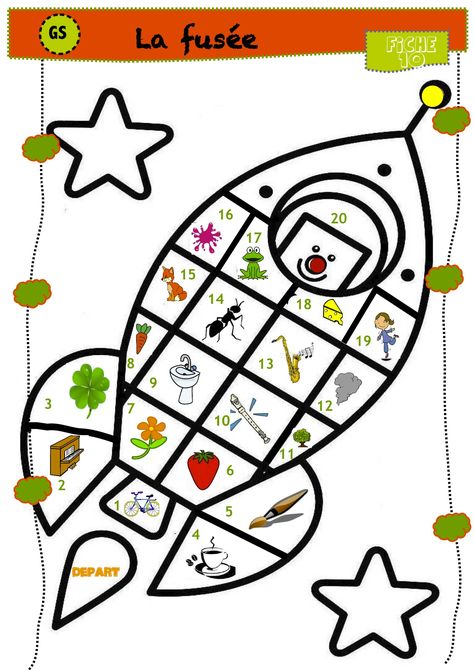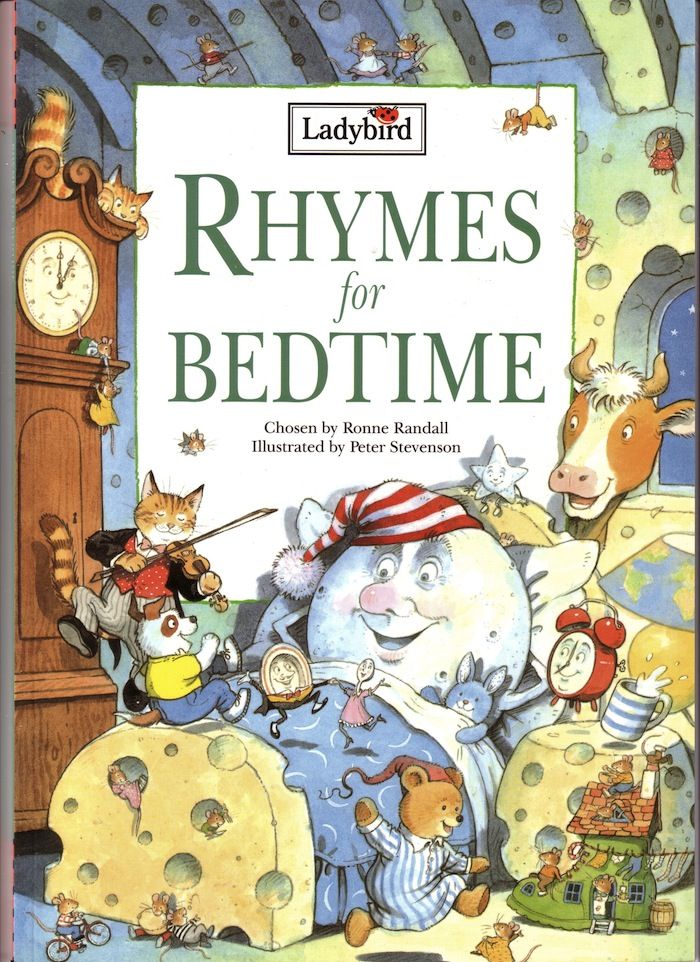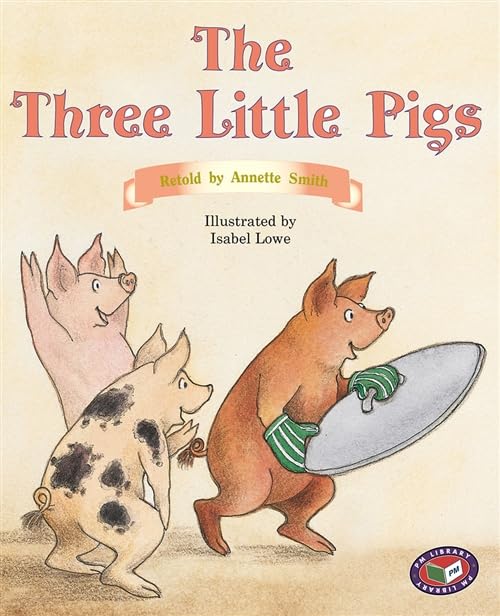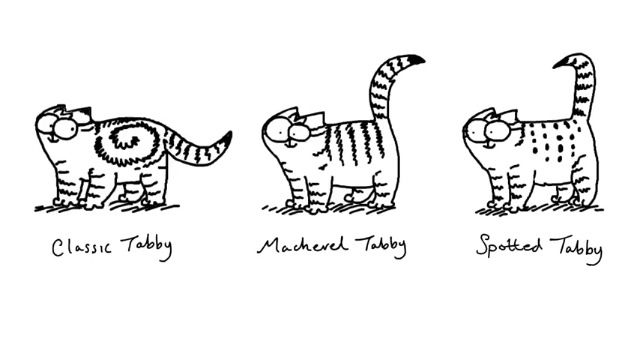Short and long sounds of vowels worksheets
Long and Short A Vowel Sounds Worksheets
Vowels are speech sounds that are made by our vocal bands. They also happen to be five / twenty-sixth of our alphabet. Depending on how a vowel sound is stressed within a word determines the classification of a vowel. There are two standard classifications. Long vowels are vowels that sound the same as the letter that they represent. For example, in the word "bake", the vowel a is said the same exact way as you say it when reciting the alphabet for your teacher. Short vowels do not have the same sound within a word as they do within the alphabet. For example, the vowel a in the word "apple". If you look at the entire language short vowels are much more common. The best way to identify the use of a long and short a vowel is to say the word aloud to yourself and ask yourself if the vowel sound is the same as the name of the vowel. If the vowel (in this case "a") says it's name, it is consider a long vowel. Such as in the word "take". If the vowel does not do that and make another sound, it's considered a short vowel.
Many people don't understand the importance of understanding long and short vowels. It becomes a very valuable skill once you start to encountering higher level vocabulary words. The most common long a words are: baby, lady, paper, bake, rake and lane. The most common short a words are: dad, hat, man, sat, fan and lane.
Get Free Worksheets In Your Inbox!
Click the buttons to print each worksheet and associated answer key.
Circle the objects that have a long A (ā) sound. Then write the word under the picture.
Circle the indicated words. It's best to sound all of them out aloud.
Color the words RED if they have words that give off the same tone and pitch as the letter itself. Color the Short a words BLUE. Color all other words GREEN.
Complete each sentence with a Long A word from the word box. This is a two part activity.
Circle the word in each pair that has the long a sound. Write that word on the line. Say the name of each picture. If it has a Long A sound, draw a line to connect the picture to the Long A.
Write that word on the line. Say the name of each picture. If it has a Long A sound, draw a line to connect the picture to the Long A.
Say the name of the picture. Circle the word in the stream of letters.
Underline the Long A words in the story and write them on the lines. Only write each word once. The story: Jane was going on vacation. She was very excited, because she was going to travel on a plane.
Cut out the pictures. Glue them next to the correct long a words.
Say the name of each picture. If it has a short a sound, draw a line to connect the picture to the it. Can you think of two things whose name contains the short a sound? Draw a picture of each thing. Then write its name on the line.
Read each word. Does it have a long (ā) sound, or a short (ă) sound? Color in the circle next to the correct sound.
Read each word. Then add an e. Read the new word and write it on the line.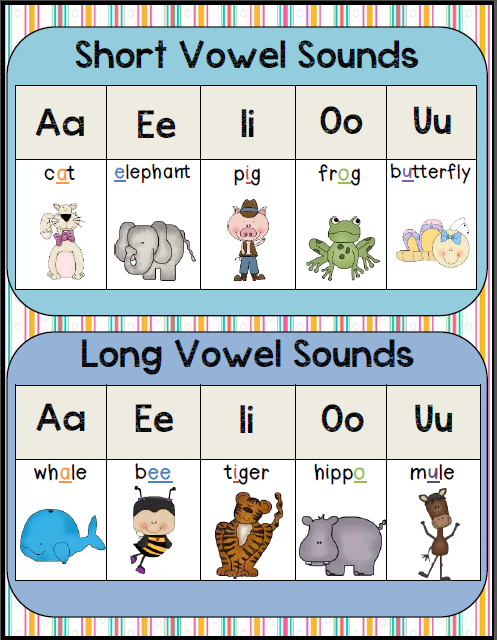
Read each word. Then draw a picture of it.
Draw a line to match each picture to the correct word.
Name each picture. Spell its name on the line.
Circle the word in each set that starts with a short a (ă) sound and the word that just contains it as well.
What is the Difference Between Long and Short Vowels?
The English language is full of complexities. The more you seem to know it, the less you do. Several components combine to make a sentence. One of the critical parts of the English alphabet is vowels. Out of the total twenty-six alphabet letters, only five are vowels. However, all of these are commonly used in our daily conversations. Today, we will examine the key differences between long vowels and short vowels. Before we get started, let's look at the definition first.
What Are Vowels?
The five letters of the English alphabet, A, E, I, O, and U, are known as vowels. These are the letters that we can pronounce with open mouths. All these letters have everyday use in many words of the English language. While this may be correct, we can classify them into two types based on their pronunciation and usage.
These are the letters that we can pronounce with open mouths. All these letters have everyday use in many words of the English language. While this may be correct, we can classify them into two types based on their pronunciation and usage.
Long Vowels
Long vowels are those with long pronunciations. The sound of these vowels depends on their positioning in different words. Typically, the sound of these vowels is similar to their alphabetical title. For example, the sound of 'A' in the word "Name" and 'E' in the word "Sheet" is similar to the sound of their titles.
Such vowels are used in open syllables, usually ending with a vowel. If two vowels consecutively arrive between the first and the last letter of any word, the first of the two will have a dominant sound. For example, the sound of 'O' in "Toad" dominates the sound of 'A,' making it a long vowel. Similarly, the sound of 'E' in the word "Beat" dominates the sound of 'A.'
If we talk about the spellings, these vowels may have complicated patterns compared to short vowels.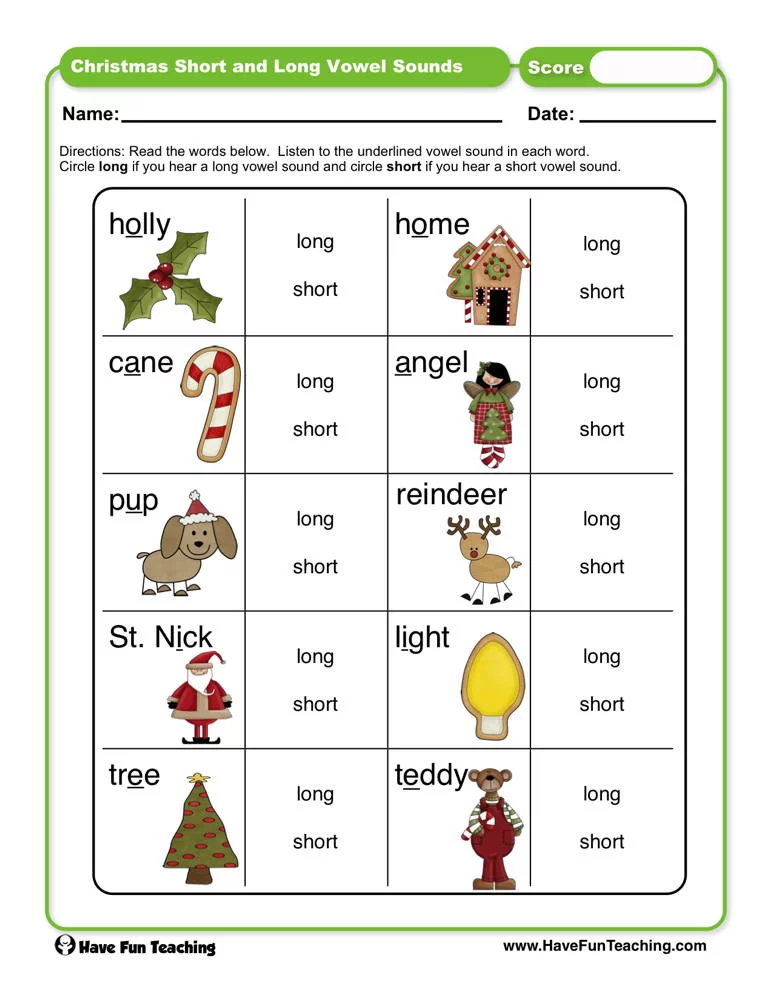 For the words in which a vowel arrives after the first letter and in the last position, the sound of the last one remains silent. However, the dominant sound of the first vowel makes it a long vowel. For example, the sound of 'E' in the word "Take" is silent.
For the words in which a vowel arrives after the first letter and in the last position, the sound of the last one remains silent. However, the dominant sound of the first vowel makes it a long vowel. For example, the sound of 'E' in the word "Take" is silent.
Short Vowels
Short vowels refer to those vowels with shorter pronunciations. Like long vowels, the sound of these vowels also depends on their position in any word. The sounds of these may not be similar to their alphabetical names. For example, the sound of 'A' in the word "Hat" and 'E' in the word "Beg" are not similar to their alphabetical names.
Since short vowels have a shorter pronunciation, you can easily pronounce them without stressing your jaws. However, this may not entirely be true. There are a few exceptions when you may need to stress your tongue to pronounce them. For example, the first 'O' in the word "Potato" demands more stress in pronunciation compared to the last 'O.
Unlike long vowels, short vowels are primarily present in closed syllables.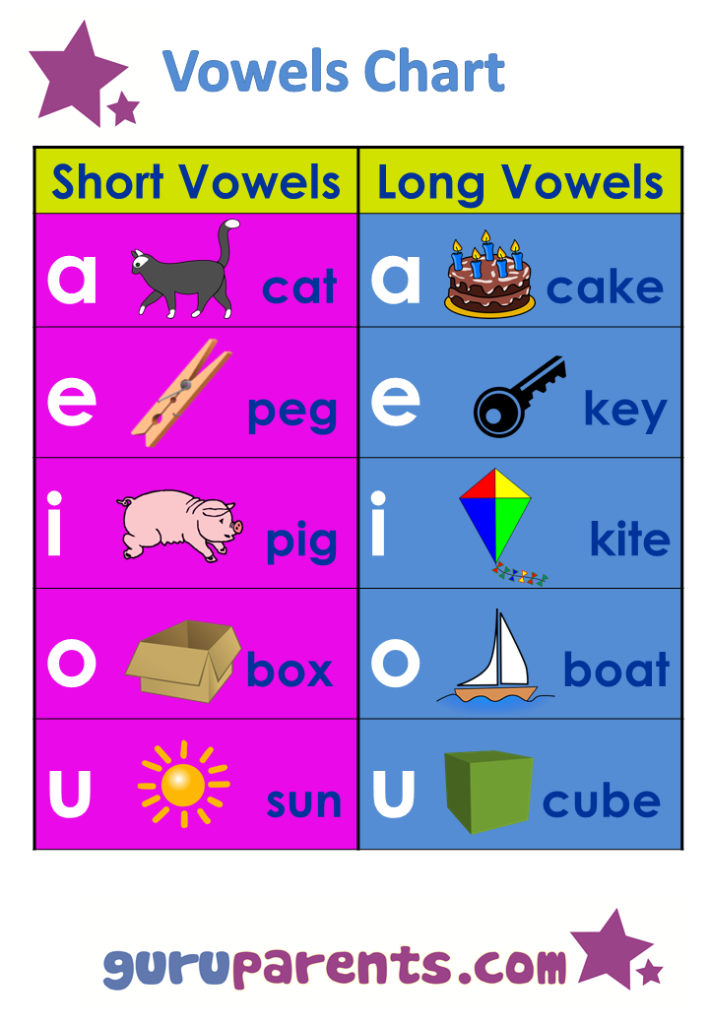 This is one of the reasons that these vowels do not demand stress in pronunciation in most cases. In some instances, you may also find these at the initial position of a word. For example, "Egg," "At," etc.
This is one of the reasons that these vowels do not demand stress in pronunciation in most cases. In some instances, you may also find these at the initial position of a word. For example, "Egg," "At," etc.
Summing Up
The key differences between the two types of vowels highlighted above can help you identify the use of each in different syllables. Minor differences can change the sounds of different words used in our daily conversations.
It is worth remembering that most of the differences lie based on the positioning of vowels. Keeping these factors in view allows you to differentiate between differently sounding words using the same vowels. If you want to look into more examples, you can conduct online research to find complex syllable structures.
Long and Short Vowel Sounds Worksheets
Pay a glowing tribute to the world of vowels with our printable long and short vowel sounds worksheets for grade 1 and grade 2! When a vowel says its name like in "cake", it's called a long vowel.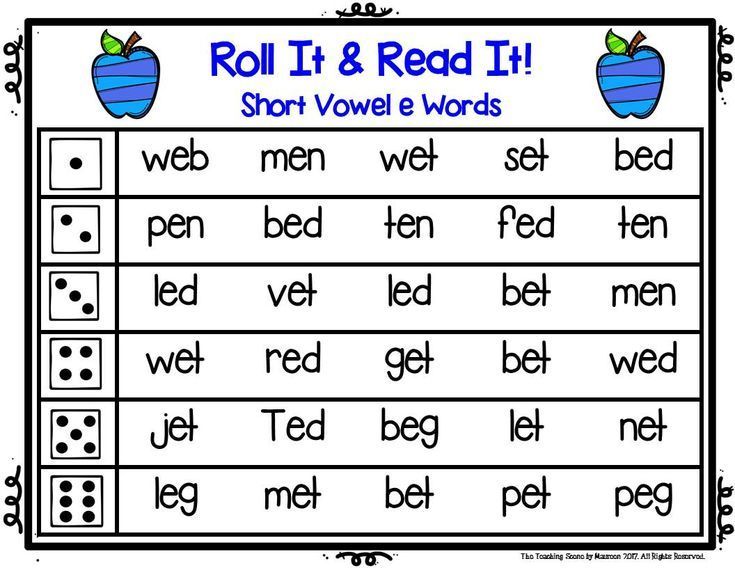 When it makes a short sound as in "zap", it's called a short vowel. That's the heart of the matter. Identify, pronounce, and spell long and short vowel words with our huge stock of pdf worksheets. Whether it's filling the blanks, coloring, tracing, circling, or simply reading for fluency, none of your favorite territories is left out. The charts help kids ease into the concept. Keep your eyes open for our free long and short vowels worksheets!
When it makes a short sound as in "zap", it's called a short vowel. That's the heart of the matter. Identify, pronounce, and spell long and short vowel words with our huge stock of pdf worksheets. Whether it's filling the blanks, coloring, tracing, circling, or simply reading for fluency, none of your favorite territories is left out. The charts help kids ease into the concept. Keep your eyes open for our free long and short vowels worksheets!
Long Vowel Worksheets
- Long A
- Long E
- Long I
- Long O
- Long U
Short Vowel Worksheets
- Short A
- Short E
- Short I
- Short O
- Short U
Explore Long Vowel Worksheets in Detail
Long A Worksheets
The long "a" sound is so commonplace that by simply refreshing the things you do every day like "play", "bake", and "mail", you get a handful of examples featuring the sound. A diverse range of printable activities and exercises to master this sound.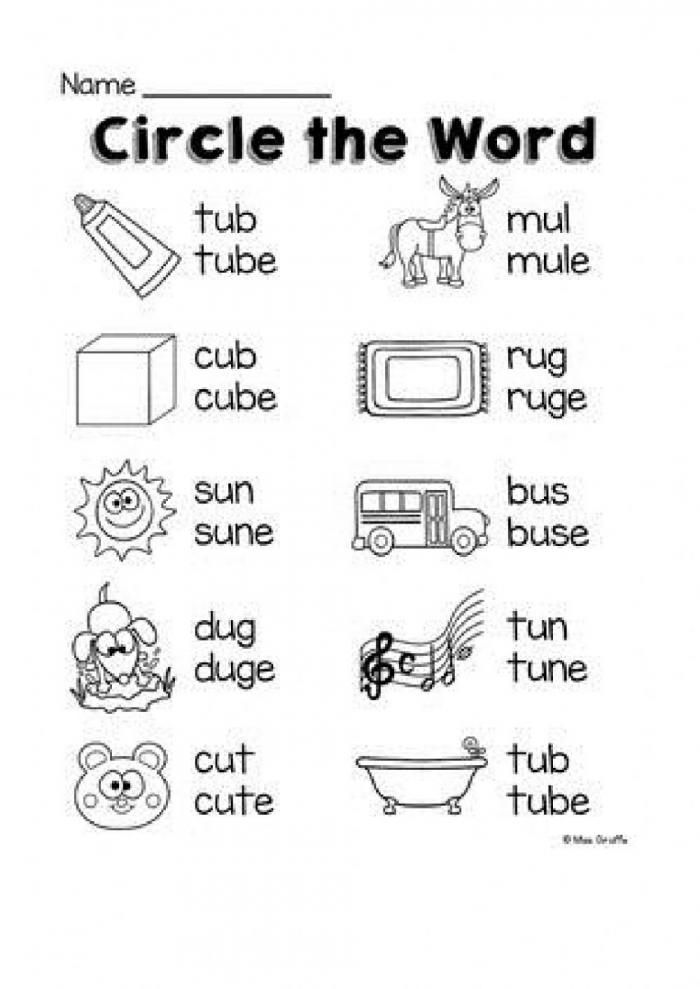
Long E Worksheets
Kick your long "e" learning into full gear with our printable long vowel worksheets! A perfectly laid-out chart, a plethora of never-boring pdf activities, and a sure-fire set of self-test tools. Ideal for grade 1 and grade 2.
Long I Worksheets
Give your phonics "smile" a "bright" "shine" by understanding the different ways of spelling the long "i" sound such as "i_e", "igh", "y", and more. Heaps of pdfs to practice this sound to your heart's content.
Long O Worksheets
Perhaps the long vowel sound spelled in more ways than any other, the long "o" is a phonemic riot. Here's where words like "home", "toast", "snow", and "toe" start growing on you with a passion like never before.
Long U Worksheets
Be happy that your phonic fortune is merry and in this mood will give you tons of long "u" words. Pdf long vowel worksheets that range from circling to underlining to filling in the blanks to more. Best for 1st grade and 2nd grade.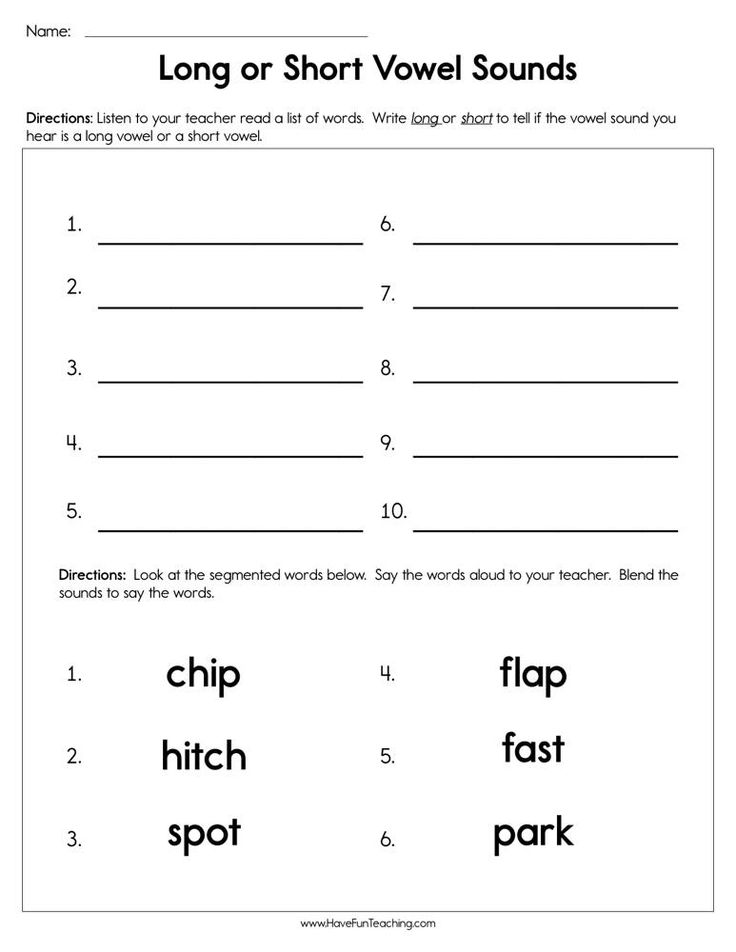
Explore Short Vowel Worksheets in Detail
Short A Worksheets
Roll out words with the short "a" sound fearlessly, flawlessly, and instantaneously! Fantastic short vowel worksheets that give you all the preparation and confidence you need to stand tall among your phonemically blessed peers.
Short E Worksheets
"Ted", "met", "gem", "pen", and on it goes! It's raining short "e" words here. Boast unquestionable brilliance in identifying and using the vowel "e" followed by just consonants. A don't-miss-it treasure for kids in grade 1 and grade 2.
Short I Worksheets
Watch children metamorphose into swaggering phonic geniuses whose skills in the short "i" sound are especially droolworthy! A chart that is instrumental in helping kids take the idea in, reams of pdf activities, and more.
Short O Worksheets
Whether it's your ever-loving "mom" or the-apple-of-your-eye "dog", you wake up to the pleasure of the short "o" sound every morning. Some of the worksheets in this resource require kids to work with a partner. So, it's going to be twice as fun!
So, it's going to be twice as fun!
Short U Worksheets
Break into an elite class of phonemic scholars with our printable short vowel worksheets! With a clearly written definition; exercises presented with well-picked, pleasant pictures; and exciting tasks, learning is both promising and challenging.
Sample Worksheets
Long A
Long O
Short E
Short I
Long and short vowels in English
Longitude is one of the characteristics of a vowel sound, which shows the relative duration of its sound compared to other sounds.
Longitude can be positional and phonemic. In the first case, the duration of the vowel depends on the position in the word and stress, while this characteristic does not affect the meaning. The phonemic length of a vowel has a semantic function, that is, depending on the length of the sound, the meaning of the word changes.
Length of vowel sounds in English
In Russian, the length of vowel sounds does not affect the meaning of words and changes only depending on stress.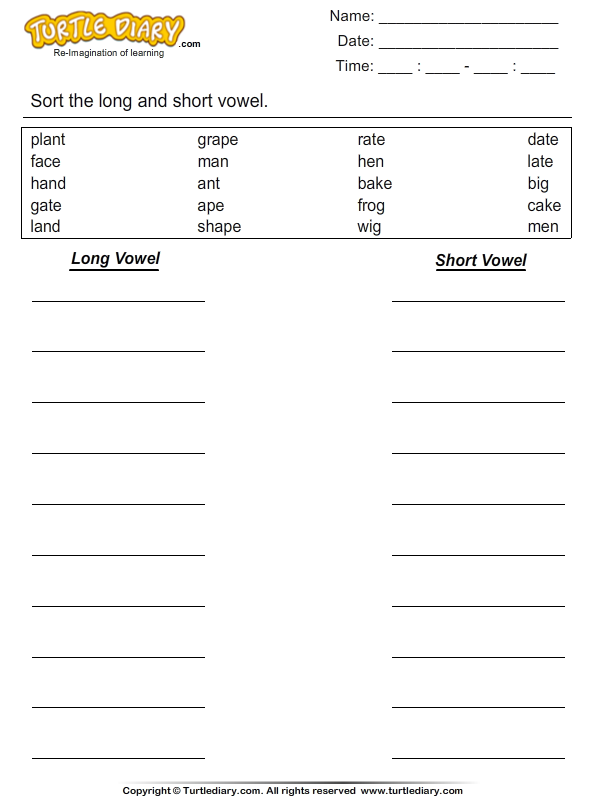 In English, vowels differ not only in positional but also in phonemic length. This means that long and short sounds, similar in other characteristics, represent different phonemes. Words that differ only in these phonemes have different meanings: ship - sheep , fit - feet , pull - pool . Therefore, it is so important to pronounce long and short sounds correctly.
In English, vowels differ not only in positional but also in phonemic length. This means that long and short sounds, similar in other characteristics, represent different phonemes. Words that differ only in these phonemes have different meanings: ship - sheep , fit - feet , pull - pool . Therefore, it is so important to pronounce long and short sounds correctly.
In transcription, long vowels are indicated with a colon: [i:], [α:], [ɔ:], [u:], [ә:]. In some cases, long vowels in an unstressed position are reduced and become semi-long, which in transcription is indicated by one dot from above: [α ].
The long vowels listed above are opposed to short vowels, forming the following pairs in English:
- [i:] - [ı]
- [uː] - [u]
- [ɔ:] - [ɒ]
- [α:] - [ʌ]
- [ә:] - [ə]
The pronunciation of long and short English vowels often causes difficulties for Russian learners of English, since in Russian vowels do not have phonemic longitude, and we are not used to distinguishing the length of a vowel sound by ear.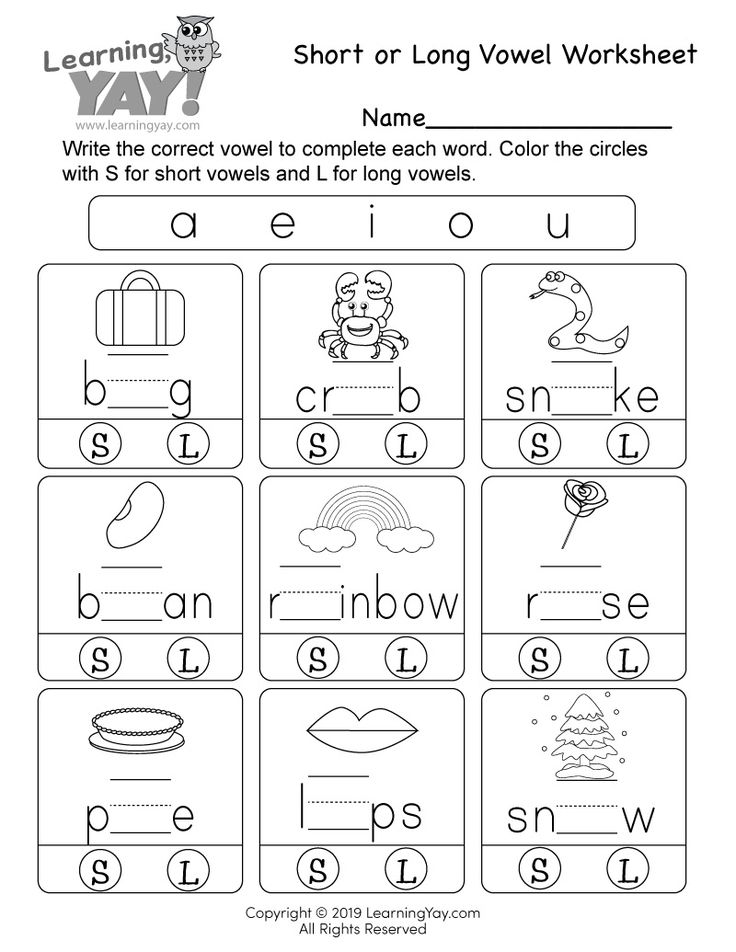 We often do not hear the difference between long and short vowels when listening to English speech. It is still not clear how long you need to draw a sound when speaking, so very unnatural, or almost inaudible, or too long vowels are obtained. It is impossible to correctly pronounce short and long sounds so that a native speaker hears the difference, even if you diligently shorten short vowels and stretch out long ones.
We often do not hear the difference between long and short vowels when listening to English speech. It is still not clear how long you need to draw a sound when speaking, so very unnatural, or almost inaudible, or too long vowels are obtained. It is impossible to correctly pronounce short and long sounds so that a native speaker hears the difference, even if you diligently shorten short vowels and stretch out long ones.
Sometimes it seems that native speakers themselves do not know the difference between short and long sounds, they seem to pronounce them the same way - but they themselves understand each other. But it's not. Let's see what are the differences between long and short English vowels, how to learn to hear them and how to train their pronunciation.
Differences between long and short English sounds
It is logical to assume that if vowels are called long or short, they differ in sound length. This is the main difference between them, but not the only one.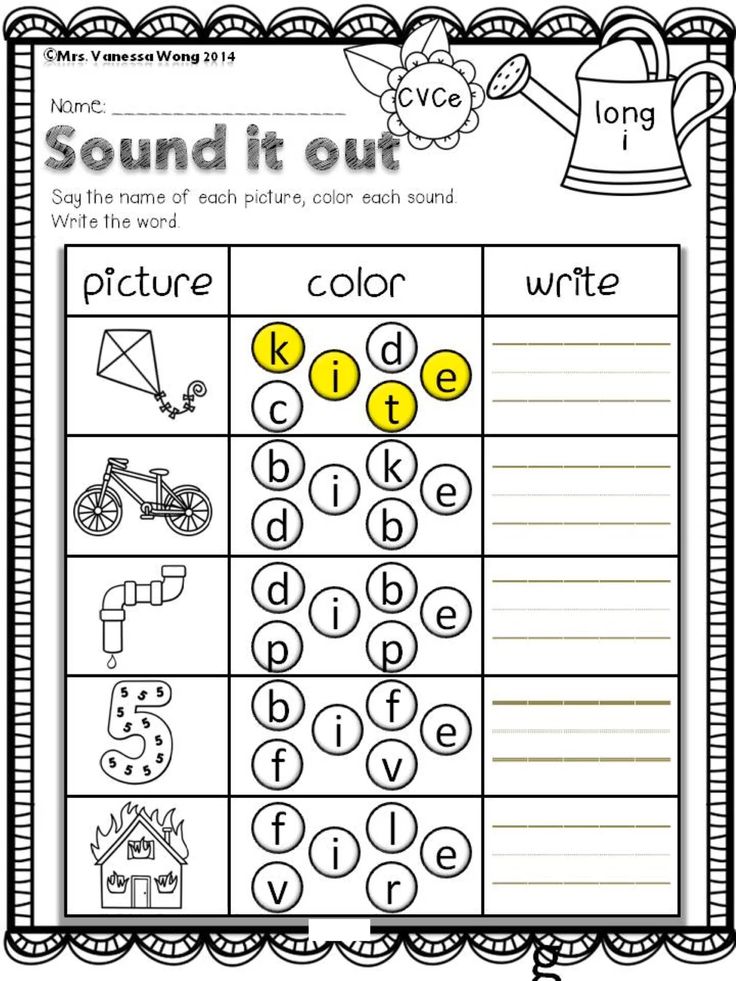 It is important to understand that long and short sounds have other differences, which consist in articulatory features. This means that the sounds are not just of different lengths, they are also different in sound. And most often it is these articulatory features that determine the length of the vowel sound: the duration of the sound depends on the position of the tongue and the tension of the vocal apparatus.
It is important to understand that long and short sounds have other differences, which consist in articulatory features. This means that the sounds are not just of different lengths, they are also different in sound. And most often it is these articulatory features that determine the length of the vowel sound: the duration of the sound depends on the position of the tongue and the tension of the vocal apparatus.
Long and short English vowels differ in such a characteristic as tension. Long vowels are tense, in English they are also called tense . When they are pronounced, the root of the tongue seems to be tense, under tension. The sound is pronounced, bright, rich, clear.
Short vowels are called lax – relaxed. The tongue in the region of the root is relaxed, the vowel sound is articulated quickly, easily, without additional effort, as if bursting. It turns out short, inconspicuous, faded and fuzzy.
Qualitative differences in sounds in different pairs of English vowels range from pronounced to almost imperceptible.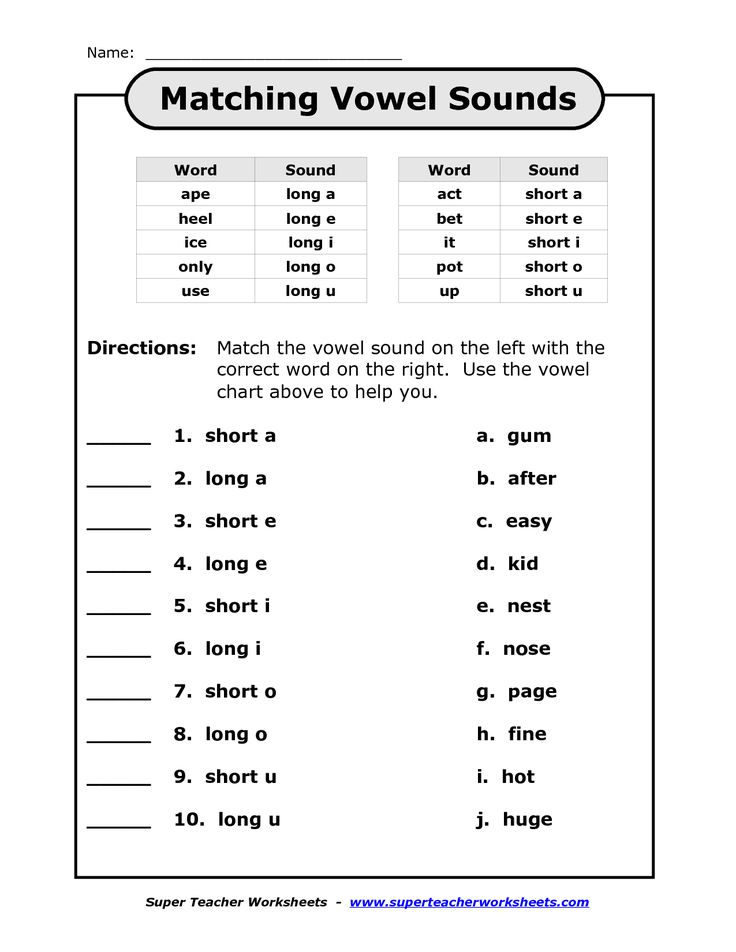 It is easy to notice the difference between long and short sounds a: pay attention to how the words cart and cut are pronounced, they differ not only in duration, but also in sound. But the differences between long and short u are almost imperceptible: pool and pull sound very similar, only slightly different in length. The Scots generally pronounce them the same way, differing only in context.
It is easy to notice the difference between long and short sounds a: pay attention to how the words cart and cut are pronounced, they differ not only in duration, but also in sound. But the differences between long and short u are almost imperceptible: pool and pull sound very similar, only slightly different in length. The Scots generally pronounce them the same way, differing only in context.
In addition, the duration of the pronunciation of vowels is also affected by positional longitude - for example, stressed or unstressed position in a word. As a result, a short vowel sound in one word may sound longer than a long sound in another word.
Thus, it is not enough to rely only on the subjective duration of a vowel sound. All the features of short and long vowels described above must be taken into account when learning English. It remains to understand how to master the pronunciation of long and short sounds in practice.
How to learn to pronounce long and short English vowels
The main mistake foreigners make when pronouncing long and short English sounds is focusing only on duration.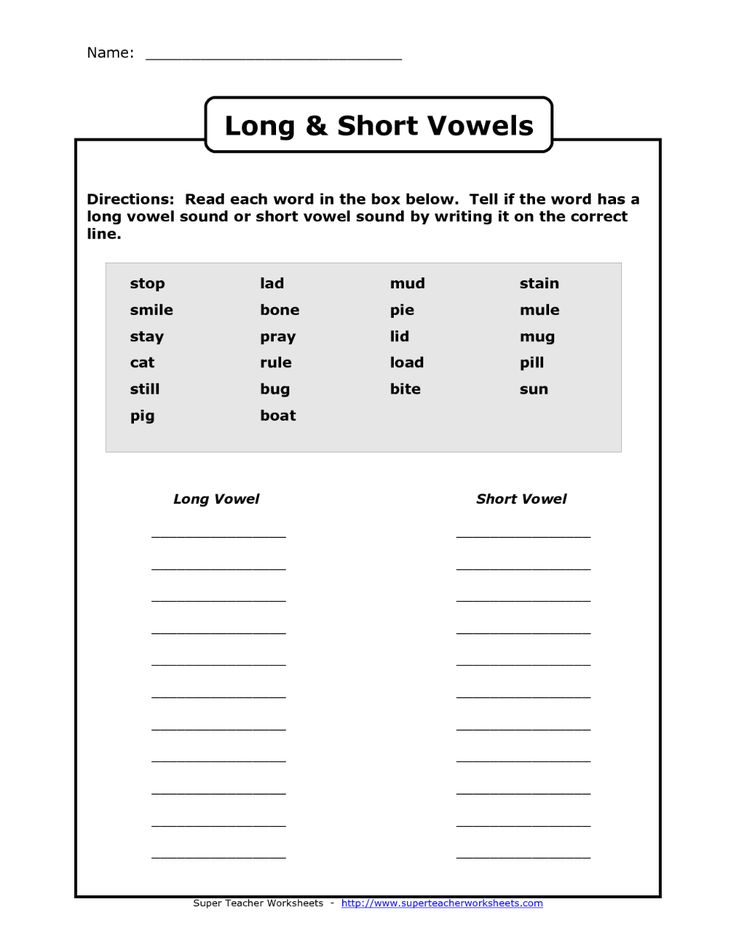 But with this approach, it is intuitively incomprehensible where the boundary between a long and a short sound passes: you can’t measure the length of a sound with a stopwatch. When trying to artificially lengthen or shorten a vowel, the sounds are unnaturally short or drawn out.
But with this approach, it is intuitively incomprehensible where the boundary between a long and a short sound passes: you can’t measure the length of a sound with a stopwatch. When trying to artificially lengthen or shorten a vowel, the sounds are unnaturally short or drawn out.
To learn how to pronounce long and short English sounds, you need to forget about the usual terminology "long" and "short". Try not to think about the duration of the sound at all. To correctly pronounce long and short vowels, you need to focus on their articulation, and not on duration. If we correctly reproduce the pronunciation of the vowel, then the duration will turn out to be correct automatically. Remember that long vowels require more tension at the root of the tongue, while short ones are pronounced without additional effort, easily and without tension.
Pay attention to how native speakers pronounce vowels - don't watch how long they draw them out, but watch the pronunciation, the articulation, the quality of the sound.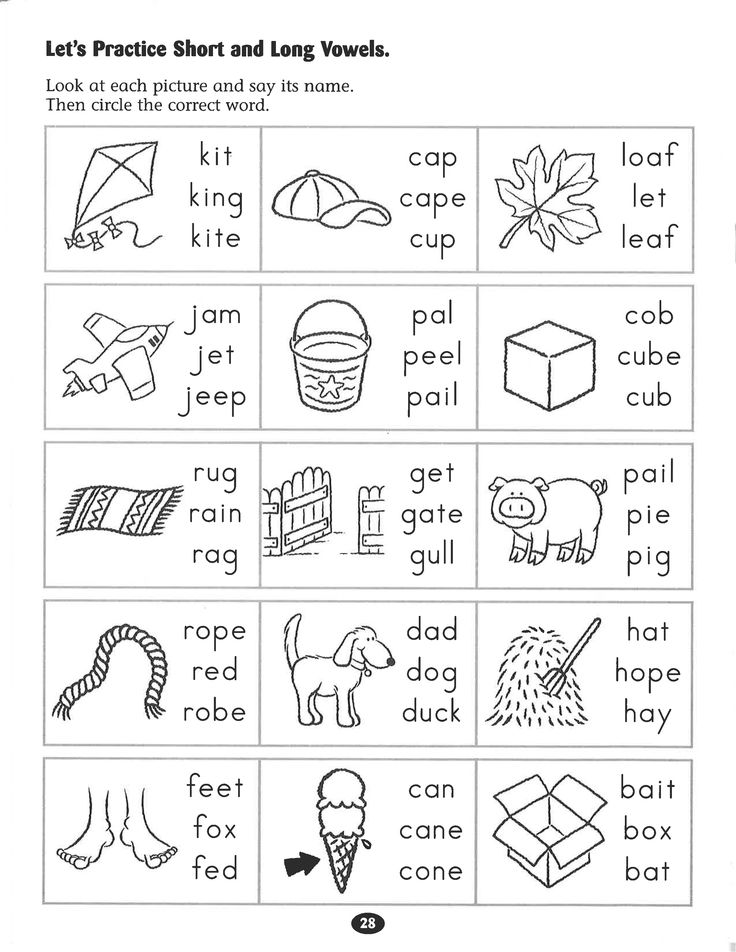 Repeat, imitate, practice. For practice, it is best to use video lessons or a conversation with a native speaker, since audio materials do not make it possible to see articulation.
Repeat, imitate, practice. For practice, it is best to use video lessons or a conversation with a native speaker, since audio materials do not make it possible to see articulation.
It is best to train long and short sounds not separately, but as part of words. First, this way you will note the influence of positional longitude on the duration of the sound in specific examples. Secondly, just as words are best learned in context, sounds are also best learned in the environment.
Practice pronunciation of long and short vowels in pairs of words to notice the difference between sounds, for example:
- Sport – hot
- Arm-cut
- See-hit
- Food-put
- Fur – ago
When you learn how to pronounce long and short vowels correctly in English, it will become easy to distinguish between them in speech. When listening to speech, forget about the differences in duration, pay attention to the qualitative differences in sounds - how intensely the vowel is pronounced, how bright or faded it sounds, how pairs of sounds differ from each other, except for duration.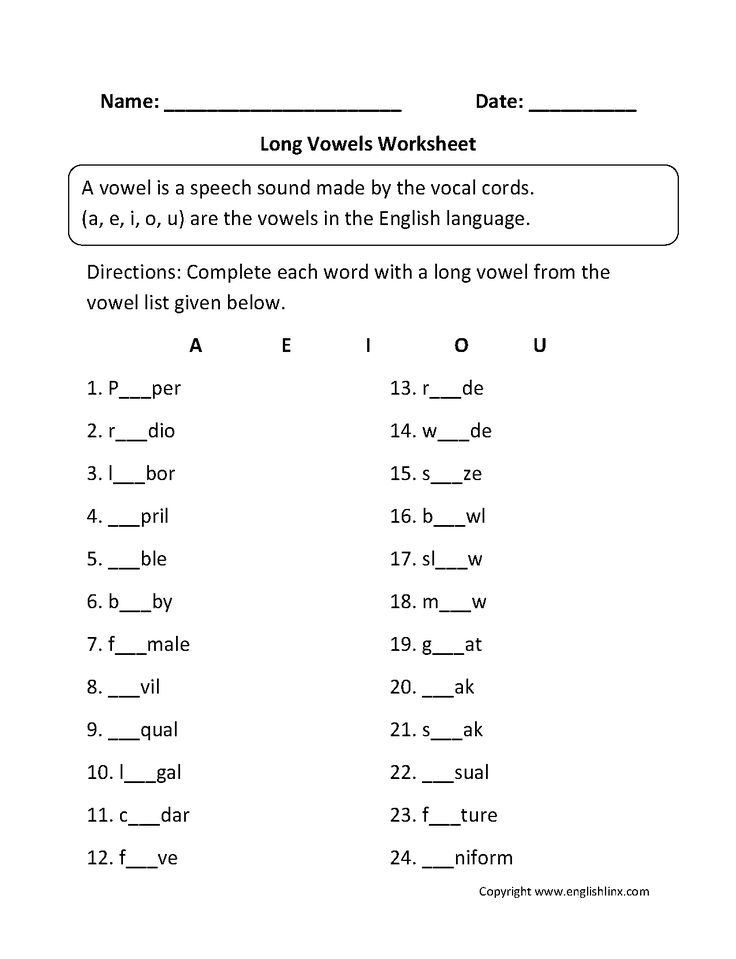
Long and short vowels in English
- home
- Information
- Materials for learning English
- Phonetics
- Short and long vowels
language Materials for learning EnglishSection AlphabetPhoneticsGrammarProverbs and sayingsAphorismsVideo lessonsBooksHow to start learning EnglishOnline lessonsJokesAbout online learningInteractive lessons
language
- Materials for learning English
Section
- Alphabet
- Phonetics
- Grammar
- Proverbs and sayings
- Aphorisms
- Video lessons
- Books
- How to start learning English
- Lessons online
- jokes
- About online learning
- Interactive lessons
Phonetics is the science of sounds.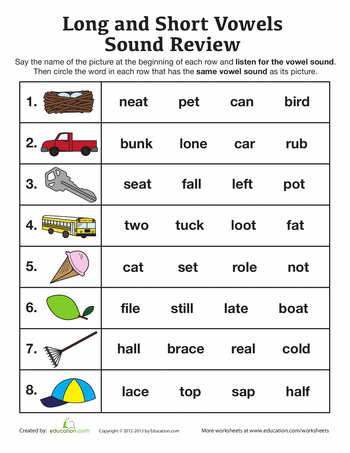 You can read about it for a very long time, but what's the point of reading when you need to hear, distinguish and pronounce these same sounds? And of course, it's best when you repeat after the so-called 'native speaker' (native speaker). No offense to Russian-speaking teachers will be said, but still our speech apparatus is used to extract Russian sounds from birth. And in order to reconfigure it in an English way, it takes a lot of effort and time, which teachers often do not have enough of.
You can read about it for a very long time, but what's the point of reading when you need to hear, distinguish and pronounce these same sounds? And of course, it's best when you repeat after the so-called 'native speaker' (native speaker). No offense to Russian-speaking teachers will be said, but still our speech apparatus is used to extract Russian sounds from birth. And in order to reconfigure it in an English way, it takes a lot of effort and time, which teachers often do not have enough of.
That's why we've put together short tutorial videos on English sounds from the BBC for you. This block is dedicated to long and short vowels. Just listen to them and repeat as many times as you can.
Short and Long Vowels
1. [u]
2. [I] - [I:]
3.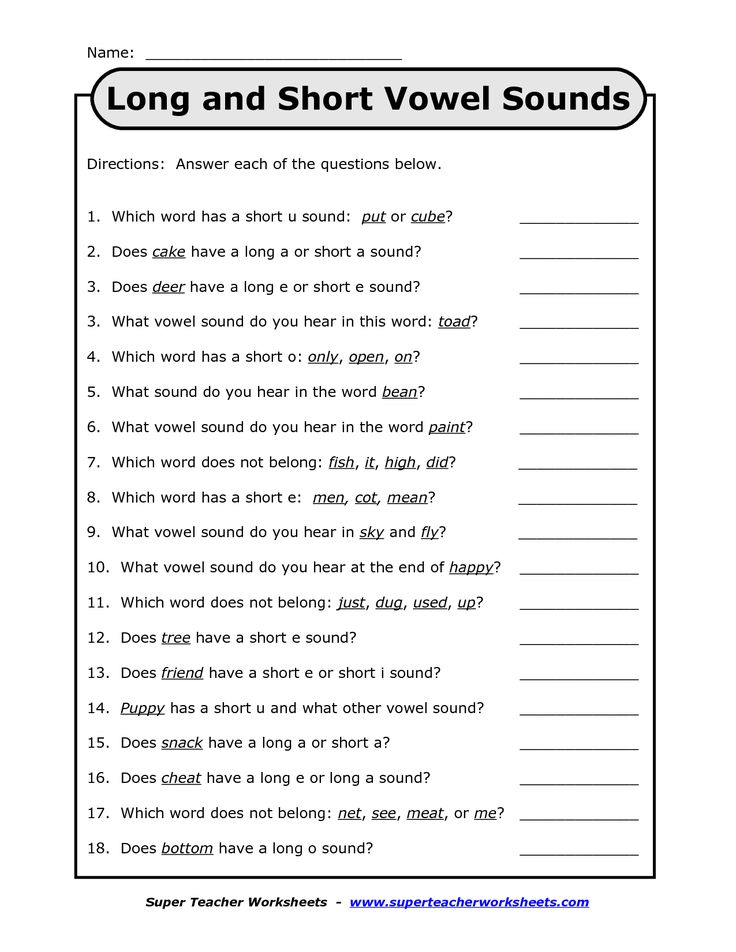 [ʌ ʌ ʌ ʌ ʌ ʌ ʌ ʌ ʌ ʌ ʌ ʌ ʌ ʌ æ]
[ʌ ʌ ʌ ʌ ʌ ʌ ʌ ʌ ʌ ʌ ʌ ʌ ʌ ʌ æ]
4. [əə ]
5. [ɒ]
6. [æ]
7. [i:] – [i]
8. [E]
9. [ɜː]
10.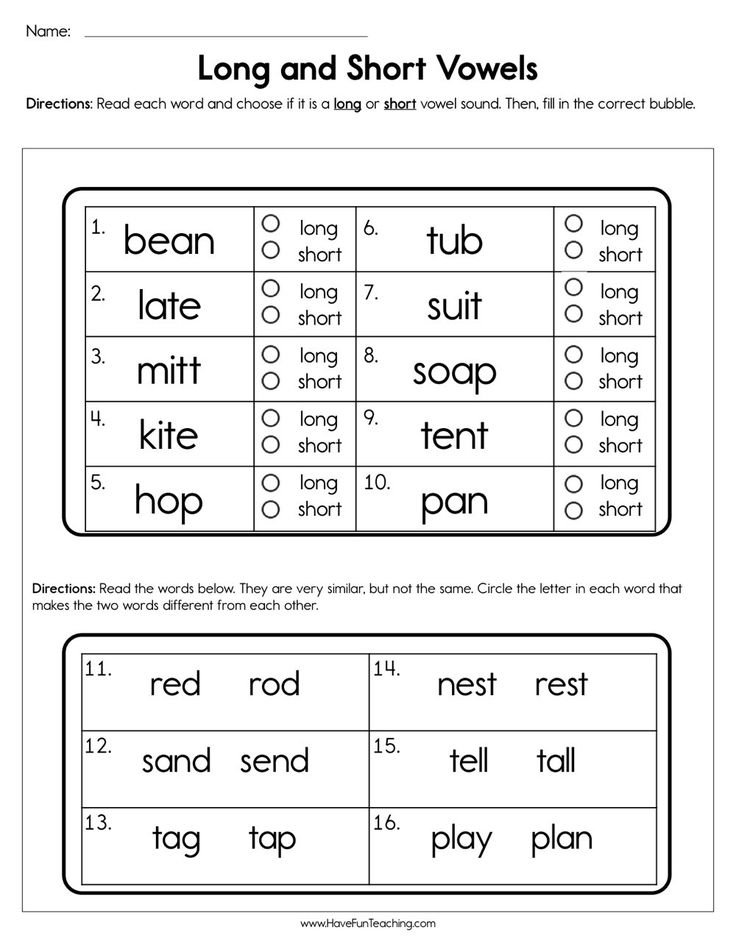 [ɔː]
[ɔː]
11. [U:]
12
Did you like the article? Share it with friends
Select your city
Moscow
- Belomorskaya
- Kuzminki
- Kuntsevo
- New Cheryomushki
- Paveletskaya
- Prague
- Prokshino
- Solntsevo
- Khovrino
Moscow
region
- Balashikha
- Zhukovsky
- Lytkarino
- Lyubertsy
- Podolsk
- Pushkino
- Ramenskoe
- Gangway
Vladimirskaya
region
- Alexandrov
Site search
Site search
Enroll
in courses
By clicking on the "Send request" button, I consent to the processing of personal data and agree to the privacy policy
Enroll
for the trial exam
By clicking on the "Submit request" button, I consent to the processing of personal data and I agree with the privacy policy
Leave your number
and we will call you back at a convenient time for you
Please introduce yourself * Contact phone number *Time 10:0011:0012:0013:0014:0015:0016:0017:0018:0019:00
Time 10:0011:0012:0013:0014:0015:0016:0017:0018:0019:00
By clicking on the "Call me back" button, I consent to the processing of personal data and agree to the privacy policy
Thank you, your application has been sent
Our manager will contact you shortly.


